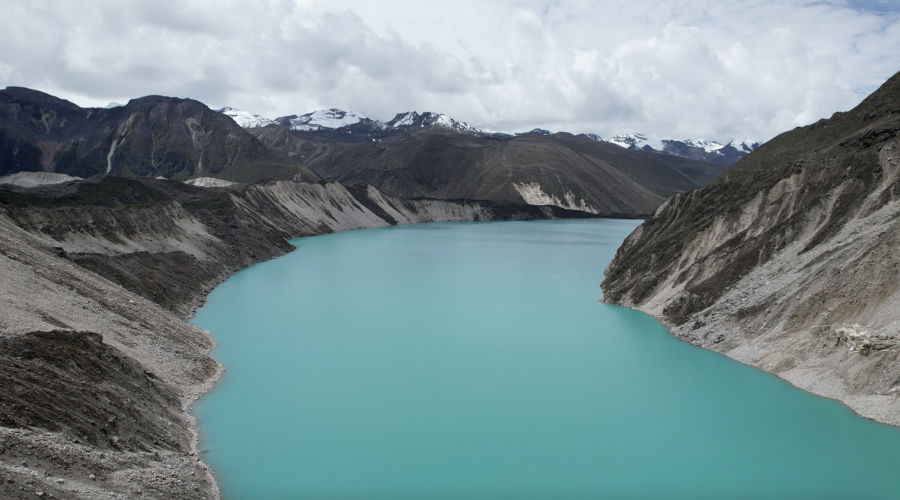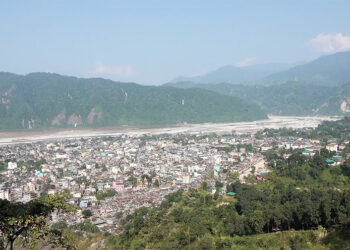 Druk Holding and Investments is partnering with Newcastle University in the United Kingdom to study the growing threat of Glacial Lake Outburst Floods. Today, the focus is on Thorthormi Lake in Lunana. They are using state-of-the-art technology to monitor the lake in real time and reduce the risks.
Druk Holding and Investments is partnering with Newcastle University in the United Kingdom to study the growing threat of Glacial Lake Outburst Floods. Today, the focus is on Thorthormi Lake in Lunana. They are using state-of-the-art technology to monitor the lake in real time and reduce the risks.
This footage was taken last month. The scene is breathtaking. But, looks can be deceiving.
 The impacts of climate change are evident. The place, once covered with glaciers, is now laid bare. Glaciers are melting faster than ever due to warmer temperatures. This makes the lake unstable, increasing the risk of a glacial lake outburst flood. According to the government assessment report 2020, the Thorthormi glacier ice upstream remains highly active.
The impacts of climate change are evident. The place, once covered with glaciers, is now laid bare. Glaciers are melting faster than ever due to warmer temperatures. This makes the lake unstable, increasing the risk of a glacial lake outburst flood. According to the government assessment report 2020, the Thorthormi glacier ice upstream remains highly active.
Researchers are using advanced sensors to keep an eye on glacial lakes and the land around them.
“We have installed water level sensors, which will look for changes in the level of the lake. So we know in real time how the lakes are changing. We have also put in time-lapse cameras. These will enable us to identify if it’s a landslide, avalanches, or rock falls that could fall into the lake, causing it to overtop. We have got seismic sensors which will enable us to tell the time at which those mass movements occurred. And then, we have radar sensors which will enable us to see how the moraine is changing in near real time and how the shape of the outlets is revolving,” said Rachel Carr, Professor of Glaciology, Newcastle University, UK.
Research is never complete without talking to the people living here. They are experiencing the impacts firsthand.
“Our preliminary assessment says that people are really worried about the flood, the impact of the flood on their lives and livelihoods. Further question is why it is important? If we have this data, it would be helpful to come up with appropriate risk reduction and mitigation strategies,” said Sonam Rinzin, PhD Researcher, Newcastle University, UK.
“We conducted excessive radar surveys, which enable us to see beneath the surface of moraines and look for ice within those moraines. So, combined with our LiDAR (Light Detection and Ranging) scanning data, we hope that we can look for changes in the moraine and understand its internal structure,” said Rachel Carr, Professor of Glaciology, Newcastle University, UK.
This teamwork brings together scientists and industry experts to help communities deal with climate change and protect the environment.
“Researchers do have cutting-edge technology, ideas, methods and tools in studying climate action or any environmental aspects. And then industry experts have got the opportunity, capacities and infrastructure to scale it and then implement it in the real world,” said Cheche, Analyst, InnoTech Department, DHI.
The project plans to include Luggye Tsho, the source of the Glacial Lake Outburst Flood in 1994.
The National Centre for Hydrology and Meteorology has been studying the lakes and their risks for years. Findings from this project are expected to integrate with the existing GLOF early warning system and help save lives when the time comes.
Kelzang Chhophyel
Edited by Tandin Phuntsho










